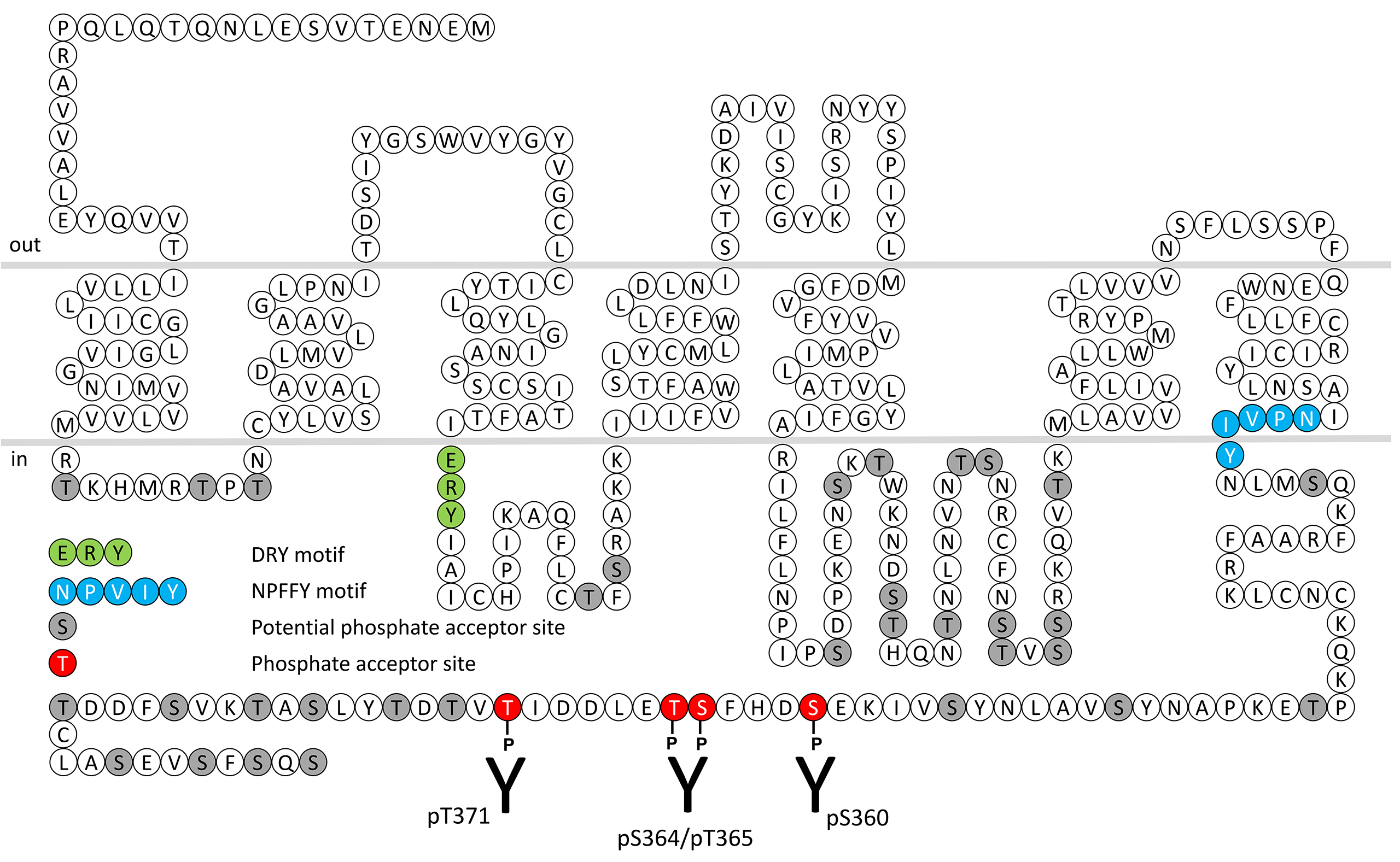TRH Receptor 1 Phosphorylation Assays

TRH1 is highly expressed in the pituitary gland where is stimulates TSH release. The physiological function of TRH receptors in other areas remains undiscovered. The best data are from knockout mice where it has been shown that TRH1 is involved in depression and anxiety-like behaviours. TRH neurons as metabolic sensors to regulate the thyroid axis in response to physiologic demands. TRH1 signal transduction is mediated primarily by coupling to Gq/11 proteins. TRH1 activation leads to stimulation of phosphoinositide-specific phospholipase C, which stimulates phosphatidylinositol 4,5-P2(PIP2) hydrolysis to form inositol 1,4,5-triphosphosphate (IP3) and 1,2-diacylglycerol (DAG). These second messengers stimulate increases in intracellular calcium and activation of protein kinase C. TRH1 receptor desensitization and internalization are regulated by phosphorylation of carboxyl-terminal serine360 (pS360-TRH1), serine364/threonine365 (pS364/pT365-TRH1) and threonine371 (pT371-TRH1). This nomenclature refers to the human TRH1 receptor. This phosphorylation motif is highly conserved across species and is identical in mice, rats and humans. For more information on TRH1 pharmacology please refer to the IUPHAR database. For further reading refer to:
Davenport AP, Gershengorn M, Hills R. Thyrotropin-releasing hormone receptors (version 2019.4) in the IUPHAR/BPS Guide to Pharmacology Database. IUPHAR/BPS Guide to Pharmacology CITE. 2019; 2019(4). Available from: https://doi.org/10.2218/gtopdb/F63/2019.4.
Alexander SP, Christopoulos A, Davenport AP, Kelly E, Mathie A, Peters JA, Veale EL et al. (2021) THE CONCISE GUIDE TO PHARMACOLOGY 2021/22: G protein-coupled receptors. Br J Pharmacol. 176 Suppl 1:S27-S156.
 pS360-TRH1 Phosphorylation Assay Kit
pS360-TRH1 Phosphorylation Assay Kit  pS364/pT365-TRH1 Phosphorylation Assay Kit
pS364/pT365-TRH1 Phosphorylation Assay Kit 

